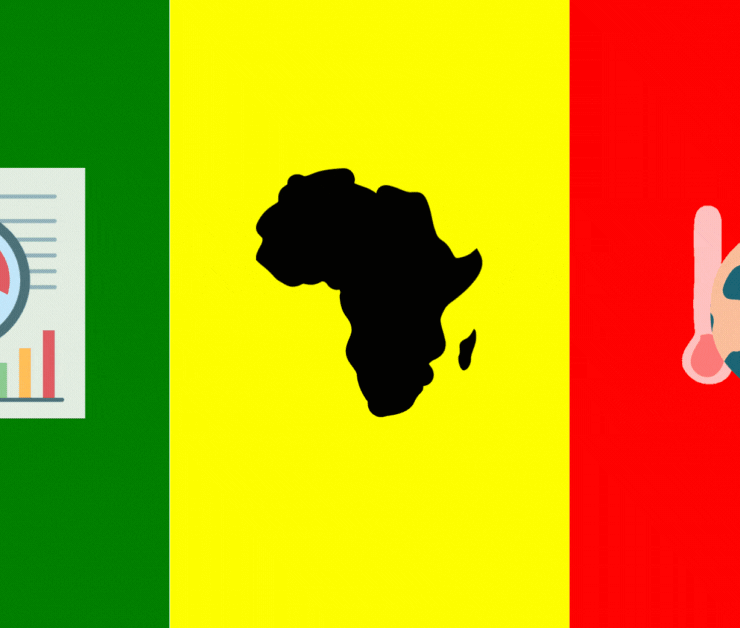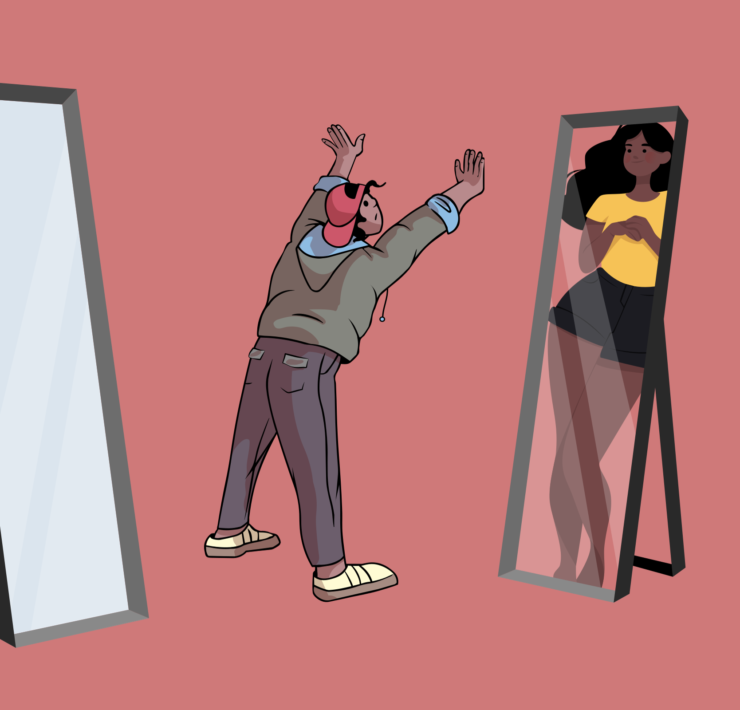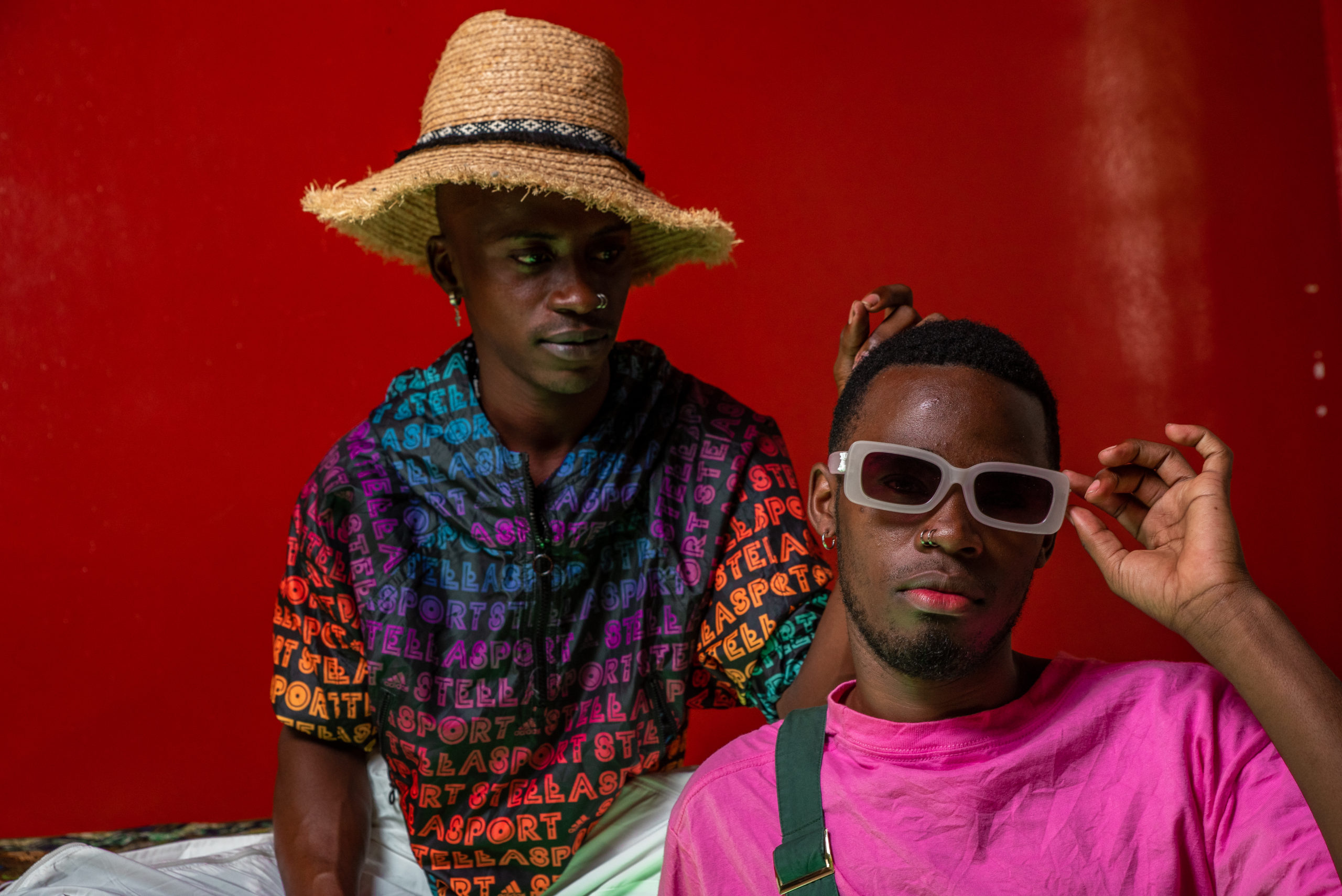The need to see Black women’s breasts outside of the white gaze
- Black women’s bodies have been scrutinized for centuries, often through the eyes of white men. The context of white men often needing to dehumanize and sensationalize the presence of Black bodies reveals African breasts to be a site of external fetishisation.

Image description: An illustration appearing to be a collage of images including frames containing a camera as the main background, a masculine presenting caucasian person peering through a camera, and a bra in the bottom left corner.
As one traverses many parts of Africa, especially the rural areas, the sight of bare-chested women going about their business is quite common. Breast-feeding mothers do so at their convenience, and the people around them are unbothered. Here, the shape and size of one’s breasts are not issues that concern many of these women. However, some kilometers into the urban areas, the narrative changes.
Breasts take on a different picture altogether. Push-up bras and any other accessories women can get a hold of to enhance their breasts become part of a woman’s wardrobe.
Breasts become public secrets, symbols of sex appeal, and particular sizes and shapes become the standard for beautiful breasts.
Breasts are ancient mammalian organs – not unique to human beings. But history has proven that breasts have an abundance of meanings attached to them, often outside of the will of the people who have them.
As regards male desirability, breasts are often defined in relation to the sexual attraction they may generate. There is a widespread sense that breasts symbolize femininity, a visual cue representing womanhood.
However, the symbolic link of breasts to womanhood as a body part has been proven superficial with evidence of cancer survivors who have had their breasts removed and trans and non-binary people.
Beyond this, there are huge considerations regarding breasts in a racialized context especially as the discourse moves towards societal perceptions and constructs around the breasts of African women.
Black women’s bodies have been scrutinized for centuries, often through the eyes of white men. The context of white men often needing to dehumanize and sensationalize the presence of Black bodies reveals African breasts to be a site of external fetishisation.
To create a new conversation around Black women’s bodies, we must also profoundly examine the specific impacts of the white gaze. The white gaze can be summarized as the viewpoints and judgments involved in the perspective of white people. Literary journalist, David Spurr has defined the white gaze as an outlook that is one of ‘surveillance’ in which the white authority projects their biases onto the objects they encounter.
In attempting to make the world ‘stable’ and ‘predictable,’ this gaze produces a multitude of stereotypes, attaching them to Black bodies. In the words of postcolonial theorist Homi Bhabha: ‘Black skin splits under the racist gaze, displaced into signs of bestiality, genitalia, grotesquerie, which reveal the phobic myth of the undifferentiated whole white body.’
This idea of ‘bestiality’ is fundamental when regarding the myths around the form of the African woman. White male imperialists or ‘explorers,’ as they often called themselves, perpetuated very harmful stereotypes of the black female body as grotesque.
A specific explorer Richard Ligon wrote an account that included a detailed description of the bodies of African women he saw on his voyage. Part of his account showed evidence of his attraction to black female bodies.
He wrote about a Black woman he saw in Barbados as being a ‘Negro of the greatest beauty and majesty…that ever I saw in one woman. Her stature large, and excellently shap’d, well favour’d, full eye’d, and admirably grac’d…greater Majesty and gracefulness’.
Ligon’s descriptions reveal the reality that Black women’s bodies provoked desire in the eyes of those who viewed them. However, this desire was often quickly replaced with racial dehumanization. It soon became apparent that these white men desired people whose humanity they were still unwilling to accept.
Ligon represents this contradiction of the white gaze as he swings between admiration and disgust for the Black women he encounters. He later represents the Black female body as deformed and undesirable.
Ligon suggested that African women’s breasts “hang down below their navels, so that when they stoop at their common work of weeding, they hang almost to the ground, that at a distance you would think they had six legs,” revealing Ligon’s view of Black women’s bodies as inferior sexual objects and tools for economic productivity.
This exaggerated description was typical of colonial white men describing Black bodies. They attempted to make the bodies appear alien, weaponizing physical difference as a tool of dehumanization.
Fast forward to the modern-day world, and black women’s breasts are still under surveillance and judgment by society.
In 2017, TV Yabantu, an online streaming service providing indigenous African content, decried being censored by big tech giants such as Meta and Google because they showed African women with breasts dressed traditionally, never mind that the display of breasts was part of the dressing and culture.
“They started removing advertising from our videos, then the views started dropping, the revenues started dropping. We don’t care about the revenues, we care about the insult to our culture,” Lazi Dlamini, who was the head of the platform at the time, told the Mail and Guardian.
He added, “You talk about community standards, but you’re only talking about western community, not African community.”
The censorship culminated in protests with women posing bare-breasted and lifting placards that read “Google a racist” and “My breasts are not inappropriate.”
Today, white and western actresses have appeared on the big screen and exposed their breasts in many western blockbusters. Unlike women in some places in rural Africa, these actresses have had their breasts shown in a particular light – as a symbol of sexuality and womanhood. And that seems to bestow acceptance on it.
We share this example to illustrate the ongoing tussle that the breasts and in general bodies of Black and African women continue to face in a eurocentric world. This view of white bodies and correspondingly breasts as the center and standard continually feeds into how African women with breasts interface with society, technology and even healthcare.
True decolonization and deconstruction of these ideals begin with a realization of the extensive policing that the bodies of African women have been subjected to through time and a corresponding resolution to do away with it. There is no agency for the bodies of Black and African women if we continue to be viewed through the aperture of the white gaze.
This post is published as part of Minority Africa’s Breast Series, a collection of reports, analysis, and opinions aimed towards demystifying and decolonizing the discourse around breasts for African women. To view more in this series, click here.
Edited/Reviewed by: Cassandra Roxburgh, Caleb Okereke, and Uzoma Ihejirika.
Funmi Lijadu is a freelance journalist, with work seen on Cosmopolitan UK, Meeting of Minds, Gal-Dem, Black Ballad, The Tab, Ours To Save and more.






